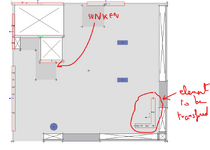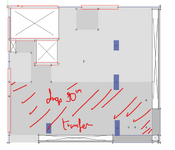structural87
Structural
Hello,
I would like to take your opinion regarding adjusting stiffness modifiers for failed walls in shear or bending.
I have a transfer system & the shear in some of the walls are exceeding the walls capacity.
The ACI recommends 0.35 for a cracked wall. However, if when this modifier is assigned and the pier is still failing in shear or bending, is it permitted to lower the shear modifier so the wall can take up to its capacity and the residual shear would be transferred to other walls which have additional capacity ?
Increasing the wall stiffness by increasing its length or thickness wouldn't be very helpful since the wall would be stiffer and would absorb more forces -> he would still fail.
Adding more walls isn’t an option due to architectural reasons and a small footprint area.
For me, if the structure is in equilibrium by adjusting stiffness modifiers and check would have been given to final stiffness output by rechecking the torsional irregularity, drift, base shear scaling, I would say this is acceptable.
Thanks for your opinions.
I would like to take your opinion regarding adjusting stiffness modifiers for failed walls in shear or bending.
I have a transfer system & the shear in some of the walls are exceeding the walls capacity.
The ACI recommends 0.35 for a cracked wall. However, if when this modifier is assigned and the pier is still failing in shear or bending, is it permitted to lower the shear modifier so the wall can take up to its capacity and the residual shear would be transferred to other walls which have additional capacity ?
Increasing the wall stiffness by increasing its length or thickness wouldn't be very helpful since the wall would be stiffer and would absorb more forces -> he would still fail.
Adding more walls isn’t an option due to architectural reasons and a small footprint area.
For me, if the structure is in equilibrium by adjusting stiffness modifiers and check would have been given to final stiffness output by rechecking the torsional irregularity, drift, base shear scaling, I would say this is acceptable.
Thanks for your opinions.


